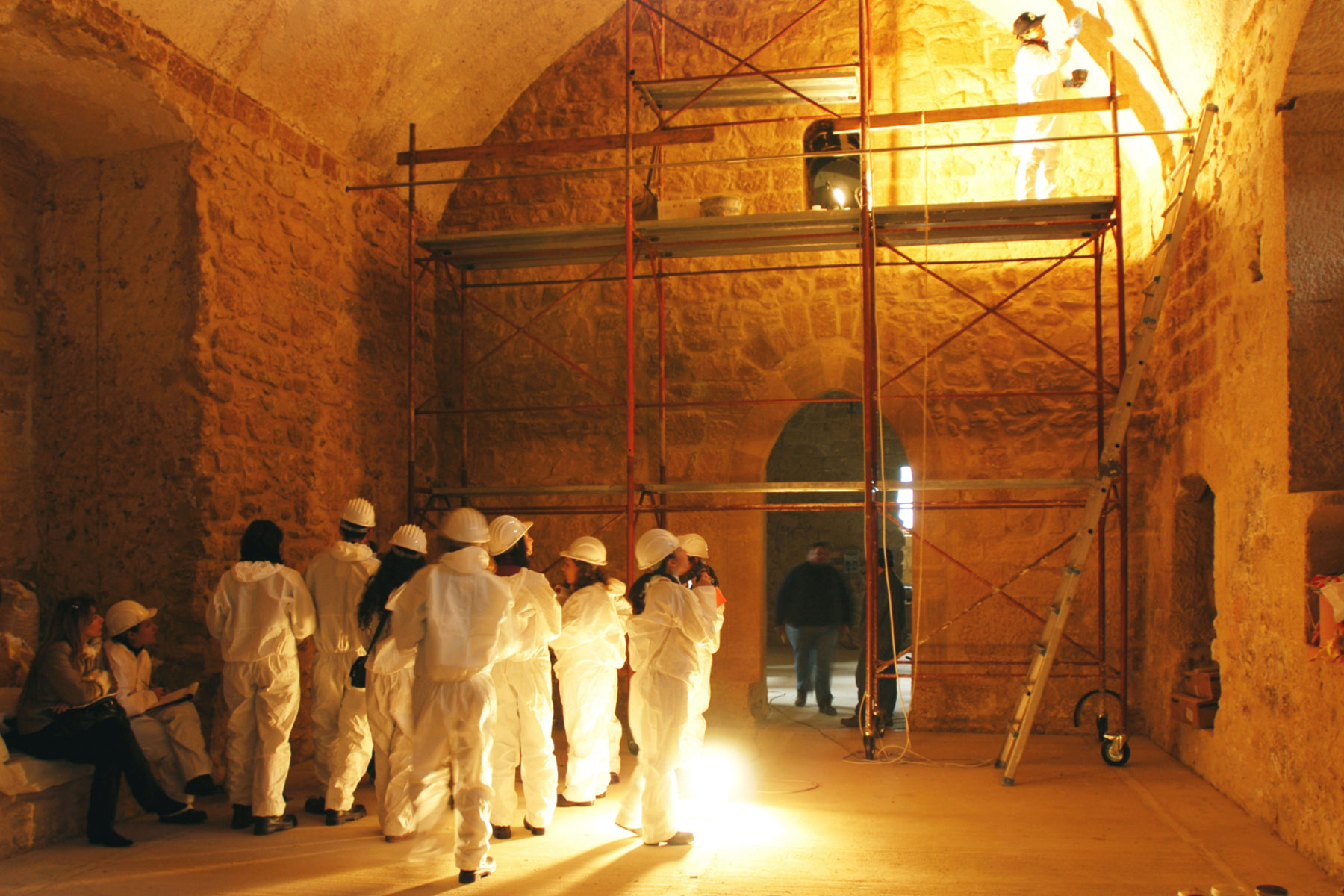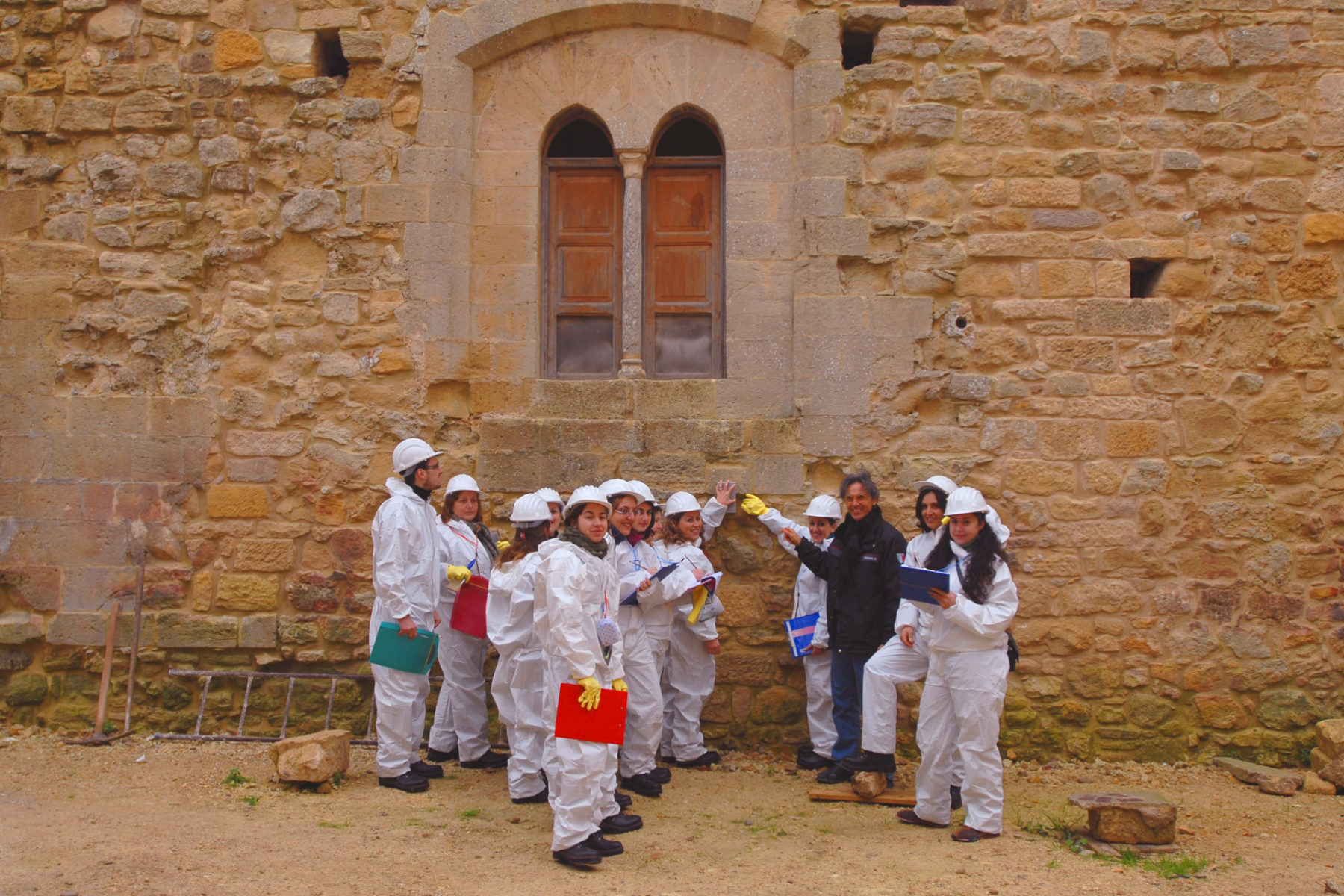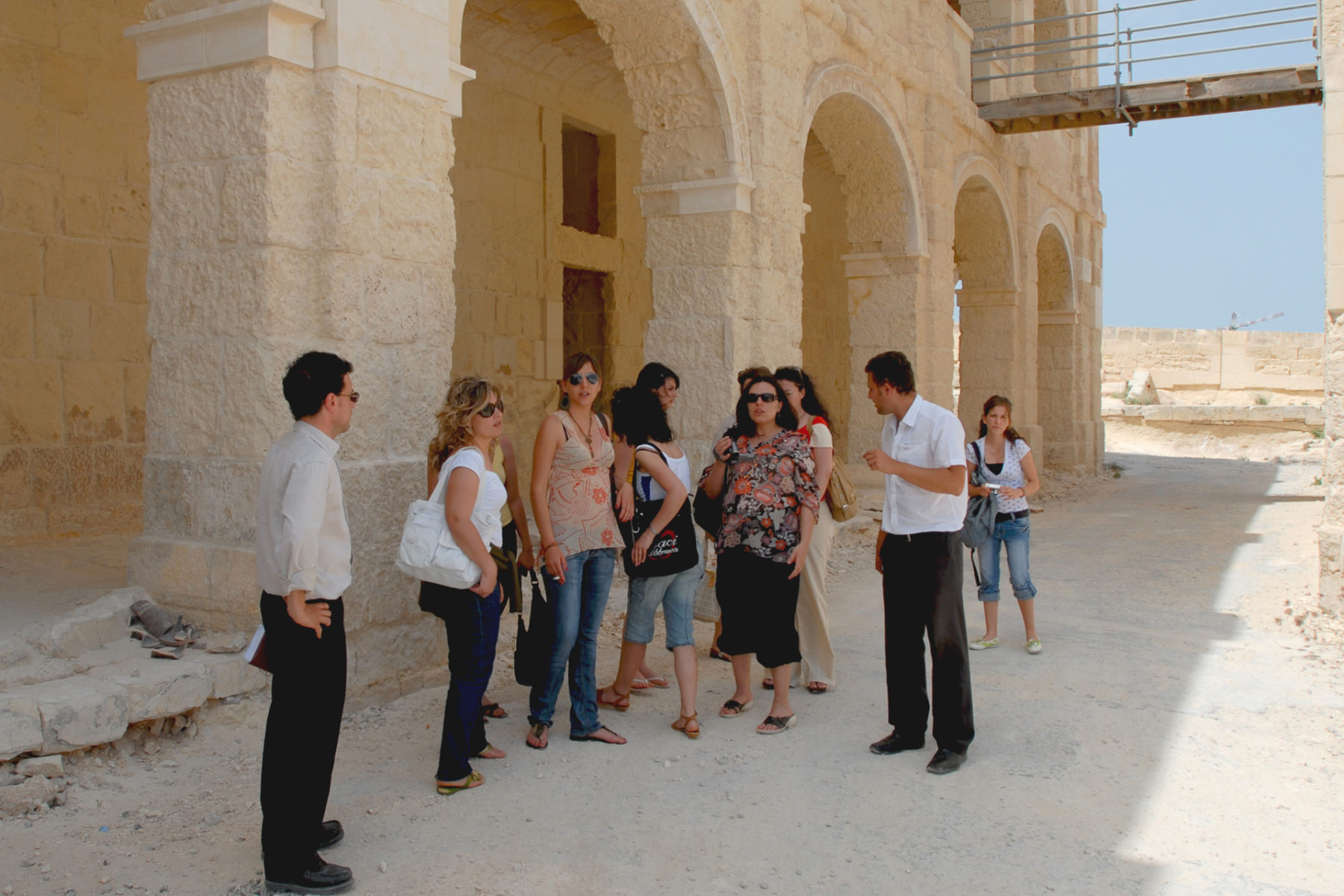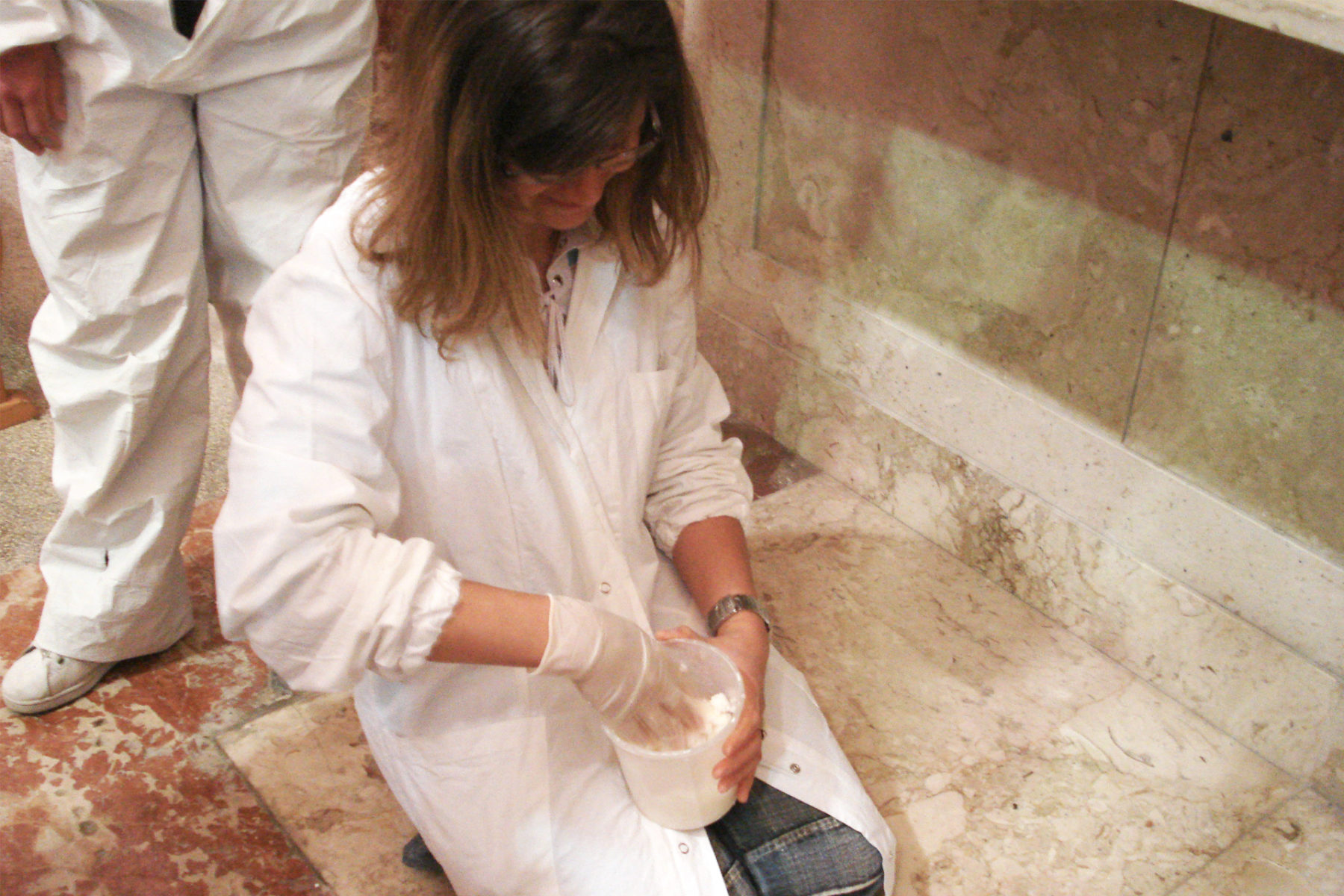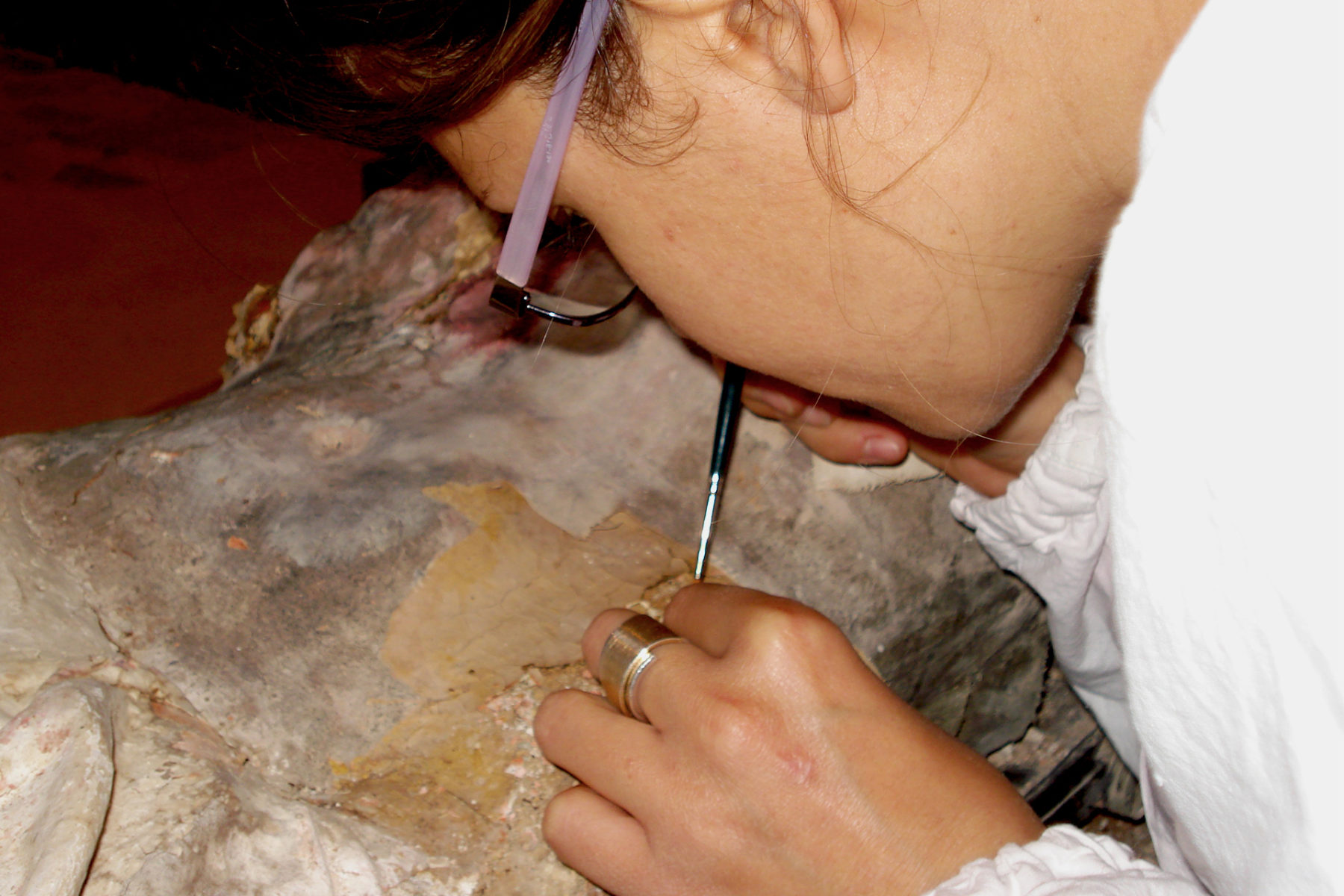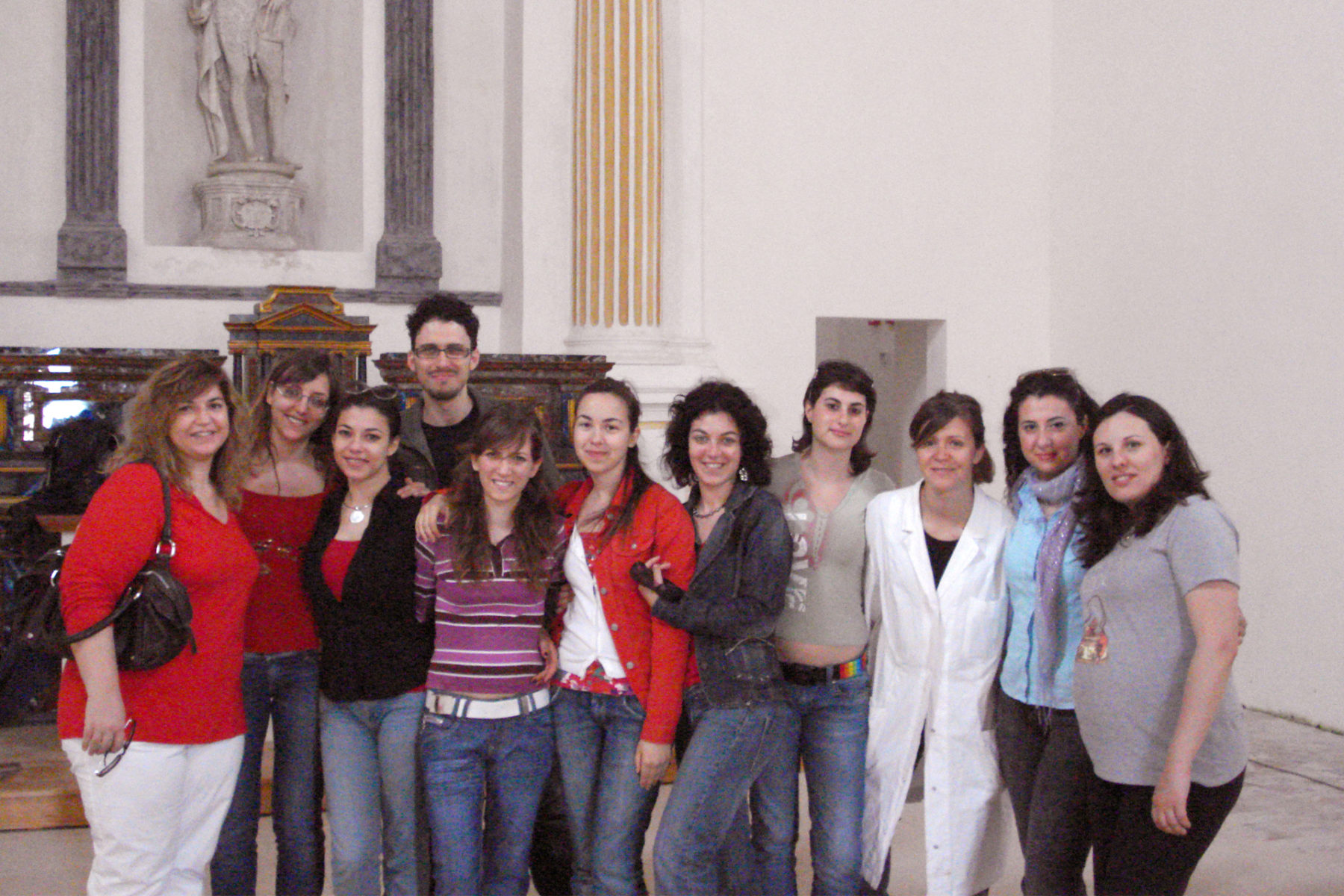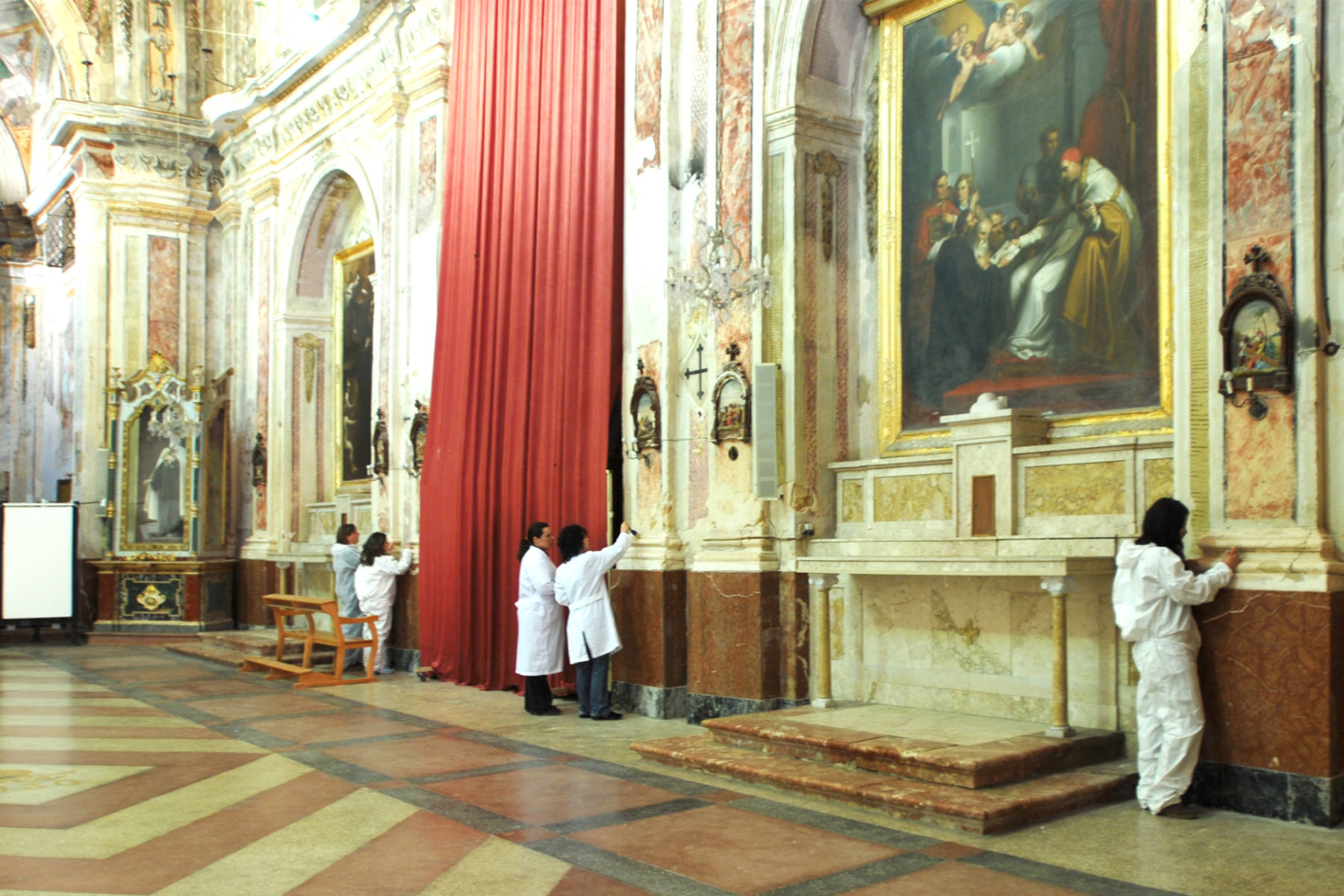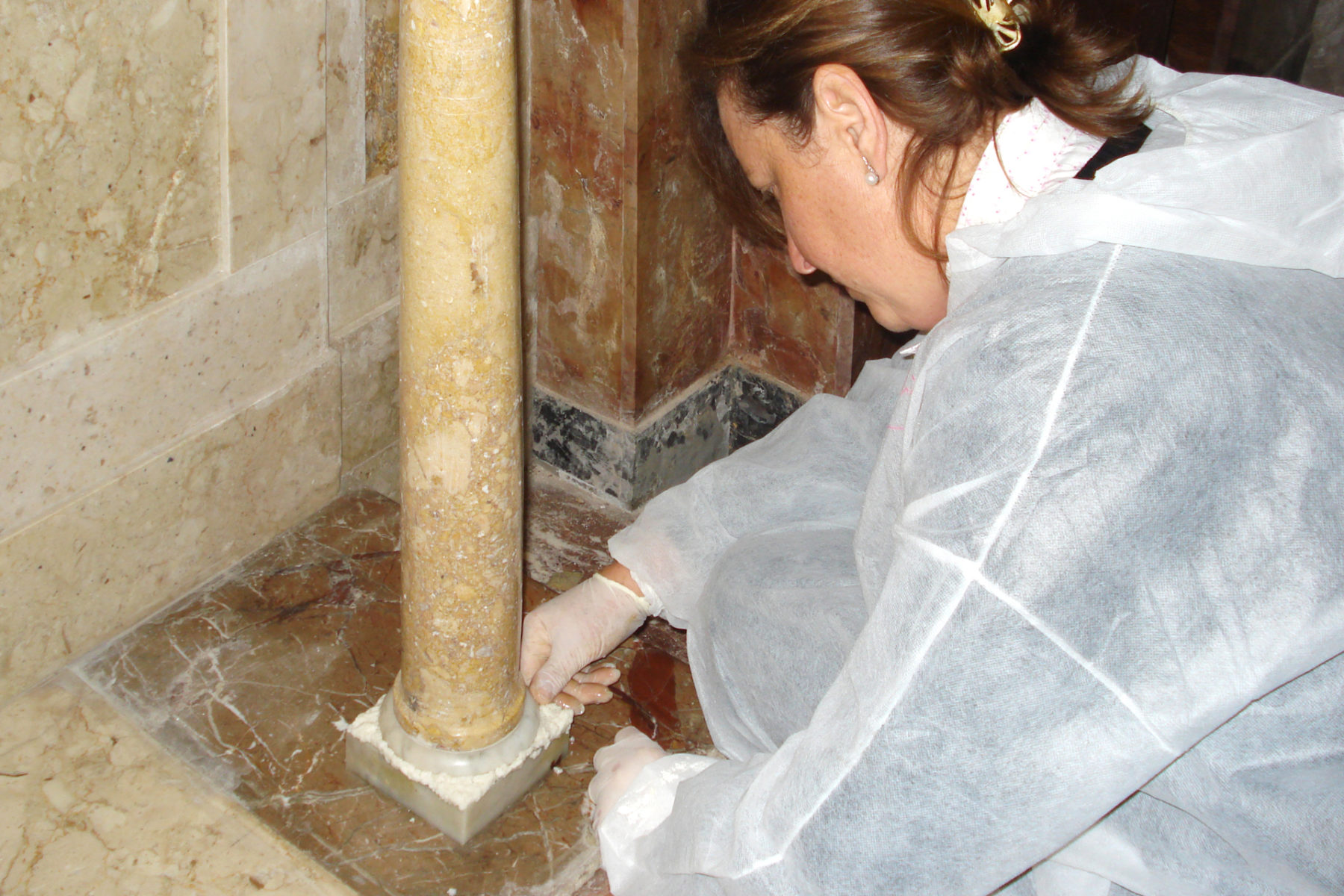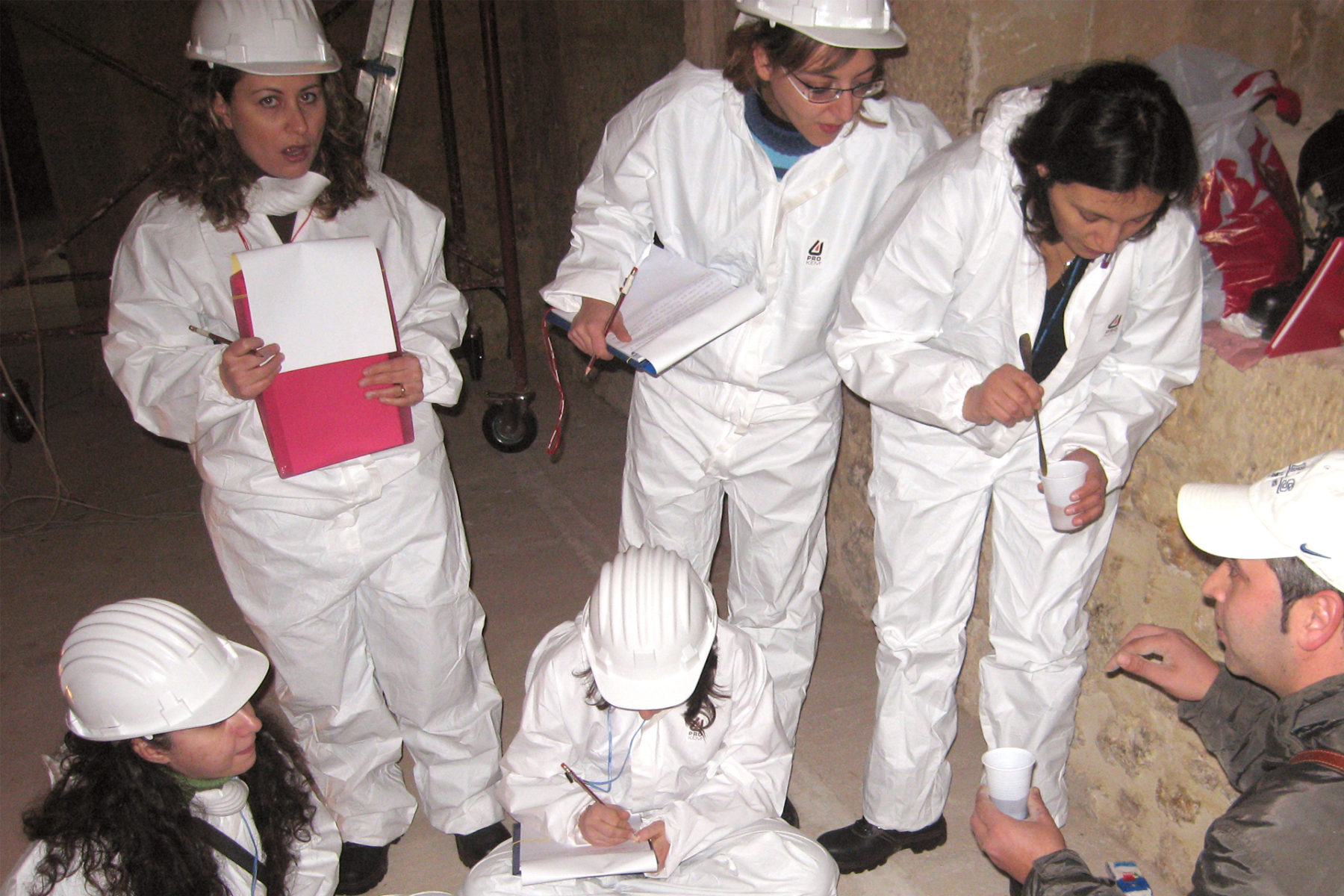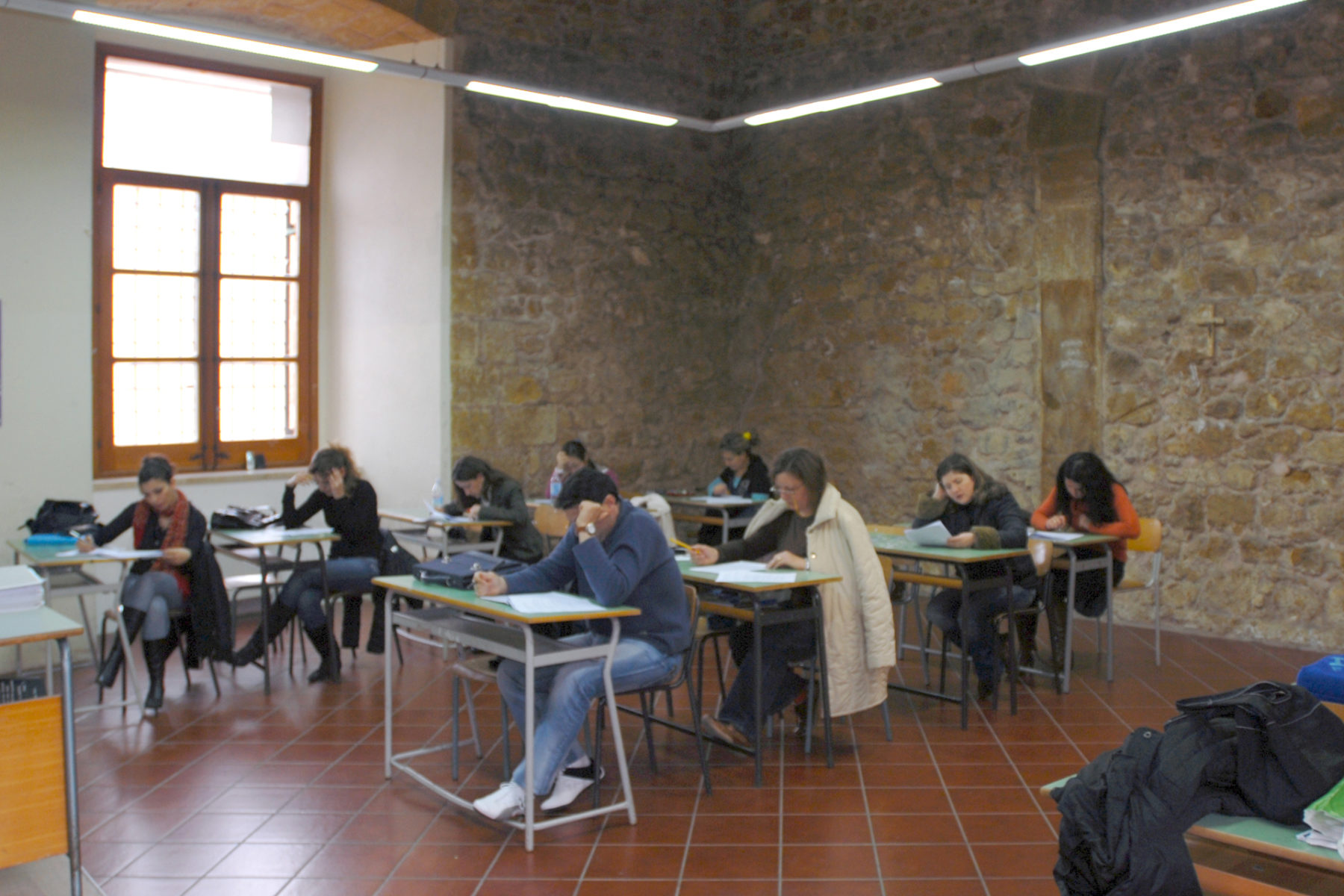The regional course I.F.T.S. of “Superior Technician for the Recovery of Paints” held in Castelvetrano was coordinated by the company Itinera Lab of Arch. Giovanni Nuzzo and involved fifteen students.
At a stage of frontal lesson he followed a series of numerous site visits during which the boys could put into practice the acquired theory.
Visits and activities on cultural and architectural heritage were organized in Malta, Salemi, and Marsala. Particularly in the latter, the interns on the stage had the opportunity to work in the church of San Pietro followed by suitable professional figures, such as a coordinator, a tutor and a restorer in order to conduct a stage to serious and professional restoration and to give students maximum information and security together.
During this period the yard was open to visitors interested in realizing the fascinating and patient restoration work to which the young cadres who have lived with the work of art, learning to recognize its composition up to read the issues and the essence made of a thousand details.
The activities were preceded by the mapping of product degradation, mapping of materials, and mapping of the interventions that you will have to go through.
During the construction, the students divided into groups and co-ordinated by tutors continued some of the restorative phases: from the cleaning of the artefacts to the fixing of precarious pictorial films that characterize the marvelous, albeit severely compromised, parietal decoration of the church of marsalese, consolidation of seriously damaged plasters until they come to the delicate intervention such as that of pictorial reintegration.
Il corso regionale I.F.T.S. di “Tecnico superiore addetto al recupero di pitture parietali” svoltosi a Castelvetrano è stato coordinato dalla società Itinera Lab dell’arch. Giovanni Nuzzo e ha coinvolto quindici allievi.
Ad una fase di lezioni frontali ha fatto seguito una serie di numerose visite in cantiere durante le quali i ragazzi hanno potuto mettere in pratica la teoria acquisita.
Le visite e le attività sui beni culturali e architettonici sono state organizzate a Malta, a Salemi, e a Marsala. In particolare in quest’ultima i corsisti impegnati nello stage hanno avuto occasione di operare all’interno della chiesa di San Pietro seguiti da figure professionali adeguate, quali quelle di coordinatore, di un tutor aziendale e di un restauratore al fine di poter condurre uno stage di restauro serio e professionale e poter dare agli allievi il massimo delle informazioni ed insieme della sicurezza.
Durante questo periodo il cantiere è rimasto aperto ai visitatori interessati ad assistere realmente all’affascinante e paziente lavoro di restauro al quale si sono affacciati i giovani corsisti i quali hanno convissuto con l’opera d’arte, imparando a riconoscere la sua composizione fino a leggerne le problematiche e l’essenza fatta di mille particolari.
Le attività sono state precedute dalla mappatura del degrado del manufatto, la mappatura dei materiali e la mappatura degli interventi che si dovranno andare ad eseguire.
Durante il cantiere gli studenti suddivisi in gruppi e coordinati dai tutor, hanno portato avanti alcune delle fasi caratterizzanti un restauro: dalla pulitura del manufatto al fissaggio delle precarie pellicole pittoriche che caratterizzano la meravigliosa, seppur gravemente compromessa, decorazione parietale della chiesa marsalese, dal consolidamento degli intonaci seriamente danneggiati fino ad arrivare al delicatissimo intervento quale quello del reintegro pittorico.
LOCATION
Marsala (TP) – Malta
PROJECT TEAM
ITINERA LAB ARCHITECTS
PHASE
Completed
